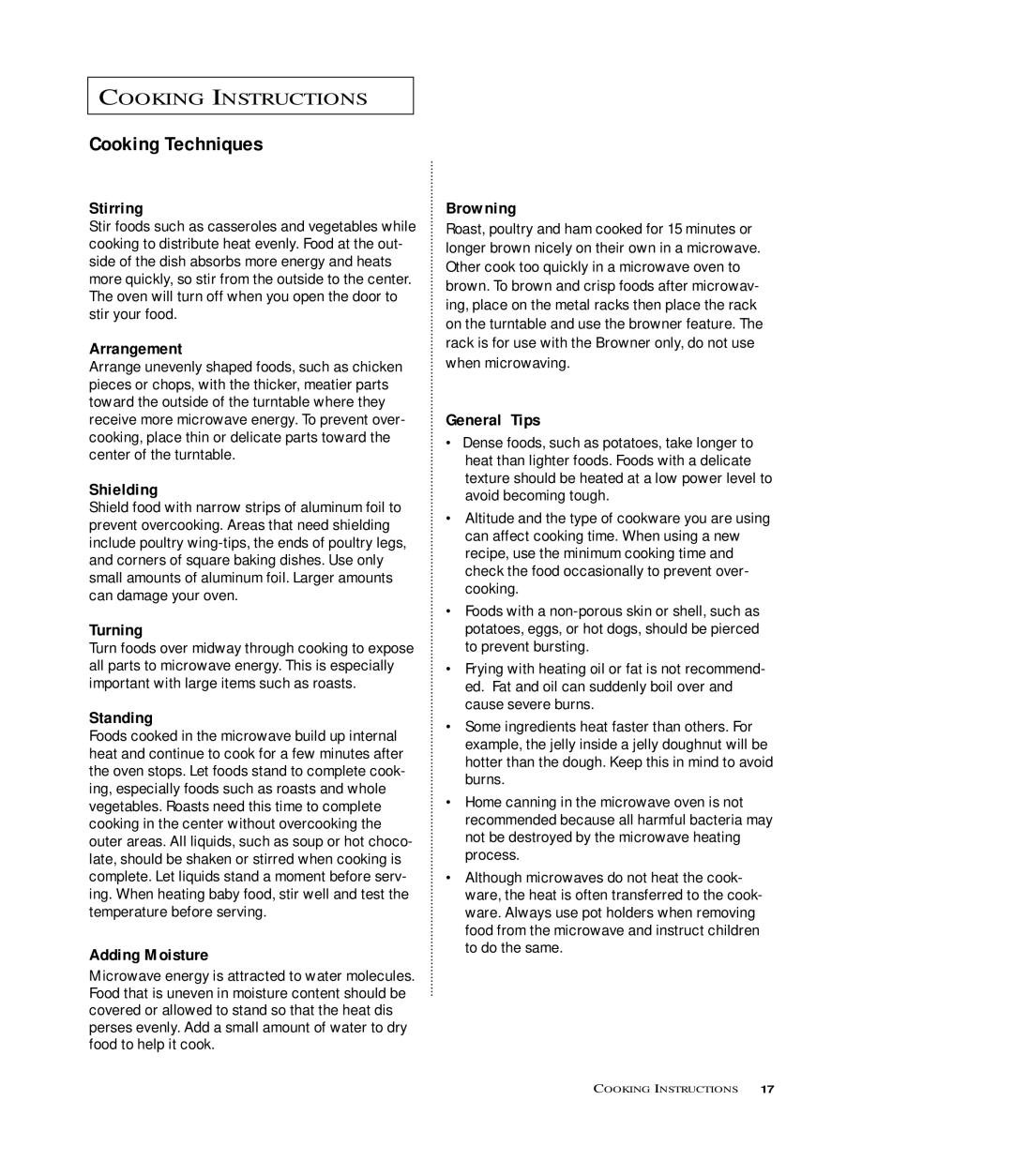
COOKING INSTRUCTIONS
Cooking Techniques
Stirring
Stir foods such as casseroles and vegetables while cooking to distribute heat evenly. Food at the out- side of the dish absorbs more energy and heats more quickly, so stir from the outside to the center. The oven will turn off when you open the door to stir your food.
Arrangement
Arrange unevenly shaped foods, such as chicken pieces or chops, with the thicker, meatier parts toward the outside of the turntable where they receive more microwave energy. To prevent over- cooking, place thin or delicate parts toward the center of the turntable.
Shielding
Shield food with narrow strips of aluminum foil to prevent overcooking. Areas that need shielding include poultry
Turning
Turn foods over midway through cooking to expose all parts to microwave energy. This is especially important with large items such as roasts.
Standing
Foods cooked in the microwave build up internal heat and continue to cook for a few minutes after the oven stops. Let foods stand to complete cook- ing, especially foods such as roasts and whole vegetables. Roasts need this time to complete cooking in the center without overcooking the outer areas. All liquids, such as soup or hot choco- late, should be shaken or stirred when cooking is complete. Let liquids stand a moment before serv- ing. When heating baby food, stir well and test the temperature before serving.
Adding Moisture
Microwave energy is attracted to water molecules. Food that is uneven in moisture content should be covered or allowed to stand so that the heat dis perses evenly. Add a small amount of water to dry food to help it cook.
Browning
Roast, poultry and ham cooked for 15 minutes or longer brown nicely on their own in a microwave. Other cook too quickly in a microwave oven to brown. To brown and crisp foods after microwav- ing, place on the metal racks then place the rack on the turntable and use the browner feature. The rack is for use with the Browner only, do not use when microwaving.
General Tips
•Dense foods, such as potatoes, take longer to heat than lighter foods. Foods with a delicate texture should be heated at a low power level to avoid becoming tough.
•Altitude and the type of cookware you are using can affect cooking time. When using a new recipe, use the minimum cooking time and check the food occasionally to prevent over- cooking.
•Foods with a
•Frying with heating oil or fat is not recommend- ed. Fat and oil can suddenly boil over and cause severe burns.
•Some ingredients heat faster than others. For example, the jelly inside a jelly doughnut will be hotter than the dough. Keep this in mind to avoid burns.
•Home canning in the microwave oven is not recommended because all harmful bacteria may not be destroyed by the microwave heating process.
•Although microwaves do not heat the cook- ware, the heat is often transferred to the cook- ware. Always use pot holders when removing food from the microwave and instruct children to do the same.
COOKING INSTRUCTIONS 17
